More About ShakespeareAMERICA
Members of the Initial Planning Group (2013-2014)
ShakespeareAMERICA
Members of the Initial Planning Group (2013-2014)
Paul Nicholson (Lead Consultant) – OSF Executive Director Emeritus*
David R. Humphrey (Project Director) – Director, Oregon Center for the Arts at SOU*
Christopher Acebo – OSF Associate Artist Director*
Jackie Apodaca – SOU Professor of Acting and Head of Performance*
Bobby Arellano – SOU Professor of Emerging Media/Digital Arts*
Alissa Arp – SOU Former Dean of the College of Arts and Sciences
Alison Carey – OSF Director of American Revolutions
Lue Douthit – OSF Director of Literary Development & Dramaturgy*
Liz Eckhart – SOU Adjunct Professor of Shakespeare Studies*
Bill Gholson – SOU Professor of English
Scott Kaiser – OSF Director of Company Development
Joan Langley – OSF Director of Education*
Miriam Laube – OSF Company Actor
David McCandless – SOU Professor of Theatre/Director of Shakespeare Studies Program*
Erik Palmer – SOU Professor of Communications/Director of Digital Media Center*
*Member of Symposium Planning Group
Proposed Programmatic Initiatives In Development
ShakespeareAMERICA
Proposed Programmatic Initiatives
In Development 3/10/14
Convening Goal: Create a series of convening academics, students, teachers and theatre practitioners aimed at bridging the gap between scholarship and practice.
Audience engagement component
– Host a one-week inter-generational gathering focused on the artistic process (“Access to Process; Process to Access”)
– Host a one week gathering focused on intergenerational responses to the works of Shakespeare.
Scholarship/Research component
– Invite scholars in related fields to participate in convening.
– Set up session that connect scholars to performance (e.g., show how scholars and their work help actors build a character.)
– Bring in scholars from different fields and encourage them to interact.
– Bring literary and practicing scholars together – see what they can learn together.
– Examine impact of multi-cultural casting and performance (connect with Arizona State University.)
– Work to build connections with other universities that are conducting research on Shakespeare studies and performance methodology.
Teaching component
– Host post-show discussions focused on teaching Shakespeare.
– Invite SOU Honors students, Theatre students and English Literature students to participate.
Digital component
– Create video documentation of sessions.
– Institute a social media platform during convening (e.g., encourage opinion postings)
– Distribute short, provocative recordings of significant moments in the convening to theatres, Shakespeare Festivals, …
Education Goal: Create and invigorate a series of education programs that provide a uniquely American approach to teaching about the life, times and works of Shakespeare.
Audience engagement component
– Create a graduate level program in bridging performance and scholarship (a Masters level program in Textual Studies.)
– Explore undergrad program options in Shakespeare Studies ad the connection between those programs and the Institute.
– Explore the possibility of a Ph.D. program in Shakespeare Studeis that is integrated with the work of the Institute.
Scholarship/Research component
– Bring in scholars for residencies (partnership between OSF and SOU).
– Involve scholars in the dramaturgy process.
– Enable scholars to give guest lectures on such topics that employ an American perspective.
Teaching component
– Connect with SOU and OSF’s programs for high school teachers and collaboratively work to adapt those programs for use in universities.
– Identify and connect with universities that have significant Shakespeare programs.
Digital component
– Put classes on line
– Document classes and lectures to be shared and archived.
– Connect to international efforts to digitize information on Shakespeare (See Christopher Acebo.)
– Document examples of the creative process for on-line posting (rehearsal, building a character, scenic design, costume design, sound design, videography, etc.)
– Explore how social media can deliver information about Shakespeare and can play a part in the theatrical experience.)
Performance Goal: Create a platform for the examination of live performances of Shakespeare’s plays.
Audience engagement component
– Create a new festival, inviting Shakespeare companies from around the world to perform in Ashland.
– Produce an activity that connects to the world-wide marking in 2016 of the 450th anniversary of Shakespeare’s death.
– Host a one week gathering for artistic directors to explore new creative approaches to Shakespeare performance.
Scholarship/Research component
– Invite scholars to compare production approach to several versions of the same Shakespeare play.
– Work with theatre companies around the world to create and record a video version of a Shakespeare play in which each scene is produced by a different company.
Teaching component
– TBD
Digital component
– Work with Actors’ Equity and LORT to allow video recordings of Shakespeare plays for educational purposes (likely with restricted access to see those recordings).
Recording Goal: Record performances of 100 versions of American productions of the plays of Shakespeare over a ten year period.
Audience engagement component
– Invite specially-selected audiences to attend the recording of the productions.
– Engage the audience in a substantive discussion about the recording process.
Scholarship/Research component
– Become the portal for scholarship relating to the performance of Shakespeare’s plays.
– Teaching component
– Make accessible digitally-recorded versions of Shakespeare’s plays to educators throughout the world.
– Create short videos of the dramaturgy of each of Shakespeare’s plays.
Digital component
– Institute a process that identifies professional productions of Shakespeare plays in the United States and Canada.
– Set up a process that determines which productions should be selected for video documentation.
– Facilitate the video documentation of ten American versions of Shakespeare’s plays each year.
– Set up and make accessible an on-line catalogue of recorded Shakespeare productions.
Sonnagrams by K. Silem Mohammad
ShakespeareAMERICA
A Programmatic Initiative
Sonnagrams by K. Silem Mohammad
For the past few years, Kasey Mohammad, Professor of Creative Writing at the Oregon Center for the Arts at Southern Oregon University has been composing poems based on Shakespeare’s Sonnets, which are called “sonnagrams.” The sonnagram procedure includes feeding each of Shakespeare’s 154 sonnets one line at a time into an internet anagram engine, thus generating a new list of words from each line. This initial textual output provides a bank of raw material that is quantitatively equivalent to Shakespeare’s poem at the most basic linguistic level. The sonnagram is full of intriguing possibilities, as it is poised at a liminal point between traditionally formal and experimentally procedural conceptions of constraint. See below what Professor Mohammad has to say about his creation of sonnagrams.
For the past few years, I have been composing poems based on Shakespeare’s Sonnets which I call “sonnagrams.” These sonnagrams have been published in a wide range of publications, including Fence, The Nation, and Poetry. They have also been included in anthologies such as Against Expression: An Anthology of Conceptual Writing, ed. Craig Dworkin & Kenneth Goldsmith (Northwestern UP, 2011); The Arcadia Project: North American Postmodern Pastoral, ed. Joshua Corey & G.C. Waldrep (Ahsahta Press, 2012); and Postmodern American Poetry: A Norton Anthology (2nd ed.), ed. Paul Hoover (Norton, 2013). I was also featured reading some sonnagrams in a video on PBS Newshour’s Art Beat (https://www.pbs.org/newshour/art/weekly-poem-sheriff-ed-rebuffed-her-hey-hey-hey-hey-hey-then-he-fell/).
My procedure is as follows: I feed each of Shakespeare’s 154 sonnets one line at a time into an internet anagram engine, thus generating a new list of words from each line. For example, by the time I finish scrambling Sonnet 130 (“My mistress’ eyes are nothing like the sun”) in this way, I have obtained these fourteen lines of raw results:
unthinking eyelash stereos symmetries
creamed lateral friendship horrors
heathen sonnets withdrew freeway rubbish
nowhere swahili badgers hebraic fireworks
sneakiness weathered dadaism hovered
buckshot heiress cheese reunions
defenestrated english heroism emporium
breakfasts rhythm inherits threat mementos
worthwhile keynote speaker alveoli
haunted spastic mailman thoroughfares
gassing redwood vegetarians
kindergarten rhythms sawdust wholesomeness
heavenly everyday beatnik harmonist
animate swordfish eyeball peaches
This initial textual output (which, I must admit, I find to be a realized “poem” in its own right, without any further help from me) gives me a bank of raw material that is quantitatively equivalent to Shakespeare’s poem at the most basic linguistic level: the letter. At the same time, it sufficiently alters the lexical structure of the original poem so that when I move on to the next phase of my composition, I am not overtly influenced by Shakespeare’s semantic content. From that point on, I rearrange the language, clicking and dragging letter by letter until I am able to rework the text generated by the anagram engine into a new sonnet in iambic pentameter, with the English rhyme scheme ABAB CDCD EFEF GG. Here is the completed sonnagram:
Whether Whether Whether
As able neo-dadaists are creaming
Fair realism’s heir with heavy debt,
Nowhere are funky kindergartens scheming
More rashly to inherit our regret;
As PhDs get inner motivation
From keynote speakers dressed as hipster bums,
Misled by swells of easy admiration,
We burn the finest weed in thirty slums;
As these stochastic beatnik sonnets hover
Above Swahili elk-head symmetries,
A spastic mailman’s haunted Swedish lover
Re-grates a musky wedge of English cheese;
And when she honks her frisky do-or-dare,
We pour some herbal henna on her hair.
As you can see, many of the words produced by the anagram engine survive into the final poem. I try when possible to use some of the vocabulary supplied by the initial data, though much of it must drop away in order to meet the demands of meter and rhyme. The letters that are inevitably left over go to make up the title (you can imagine my delight that it was possible in this case to arrange those surplus letters into a perfect triple repetition—the results are not always so clean).
This project has emerged out of the intersection of several preoccupations of mine. I have been interested for some time in the emergent “tradition” over the past half-century of experimental reworkings of the sonnet form, by poets like Ted Berrigan, Bernadette Mayer, Stephen Ratcliffe, Chris Piuma, Benjamin Friedlander, Igor Satanovsky, Jen Bervin, Steve McCaffery, and others. I was also inspired by the technique used by Gregory Betts in his book If Language (Book Thug, 2005), in which he systematically rearranges a paragraph from a talk by Steve McCaffery, and by Jean Starobinski’s compilation of and commentary upon Saussure’s notes on anagrams and poetic language: Words Upon Words: The Anagrams of Ferdinand De Saussure (Yale UP, 1979).
More broadly, I have for some time tended to gravitate in my own work toward processes involving some conspicuous form of anagrammatic or hypogrammatic (re)arrangement. This is clearly the case with my poems derived from sculpting Google search results, but also with earlier work in which I limit myself to the use of only certain letters, and so forth. Another way of framing this tendency is as an ongoing engagement with the very concept of poetic constraint as such, whether we understand this as encompassing conservative practices of metrical composition and various stanzaic/numerological patterns, or more recent procedural (aleatoric, chance-based) methodologies, or both. The sonnagram feels full of intriguing possibilities to me, as it is poised at a liminal point between traditionally formal and experimentally procedural conceptions of constraint. The elements of “chance” and “intentionality” (in Jackson Mac Low’s sense of the words) are balanced, or held in tension with each other, so that the act of composition simultaneously involves a submission on my part to the felicities of the arbitrary linguistic draw, and an indulgence in a more traditional version of “craft.”

